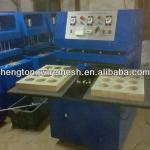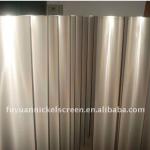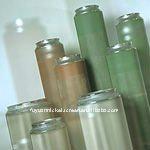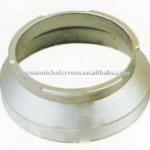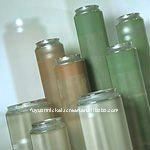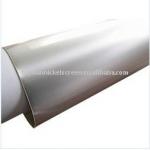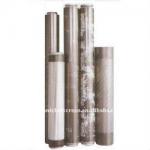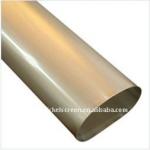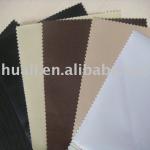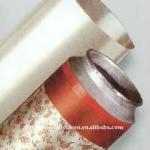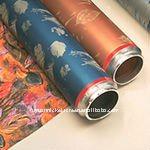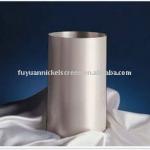HSS round cutter blade for textile machine
| Place of Origin:Guangdong China (Mainland) | Brand Name:HJAR | Model Number:HJAR-DP-016 | blade material::SK2,60#,T10,stainless steel. |
| type::cutter blade | advantage::shape edge | surface treatment::electroplating | Hardness::HRC40-68 |
| Precision::±0.02mm | Thickness range::0.1mm~6.0mm | Finishing::customized(TiN TiC,TiCN TiAN CrN...etc.) |
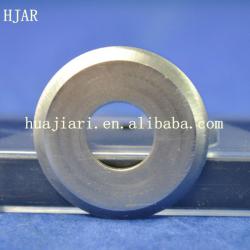
Huajiari Tools Co., Ltd. was founded in 1999 and located in Dongguan City, the center of manufacture. We focus on designing, researching and developing, manufacturing and selling blades, such as cutting blades, tungsten steel blades, cutting tools, surgical blades and diamond cutting tablets. We have more than 1000 self-developed designs and molds for you to choose from. We release at least 10 new products monthly to meet the latest market trends.
With our rich experience and considerate services, we have been recognized as a reliable supplier for many international buyers. We operate our in-house facilities to work on your OEM/ODM projects. Our experienced engineers are adept at using automatic assembly lines and manual grinding machines, enabling us to meet your customized requirements.
Best Circular Blade Manufacture For Any Industry
Hand Utility Blade Series
Circular Cutting Blade Series
Diamond Grinding Wheel Series
Diamond blades are available in different shapes:
Circular diamond saw bladesare the most widely used type of diamond blade.
Adiamond gang saw bladeis a long steel plate with diamond segments welded onto it. Normally, tens or hundreds of diamond gang saw blades are used together to saw raw stone blocks.
Adiamond band saw bladeis a flexible closed steel band with diamonds fixed (often by electroplating) on the teeth of one side of the band.
Diamond blades designed for specific uses include marble, granite, concrete, asphalt, masonry, and gem-cutting blades. General purpose blades are also available.
Application of sintered metal-bonded diamond blades
A diamond blade grinds, rather than cuts, through material. Blades typically have rectangular teeth (segments) which contain diamond crystals embedded throughout the segment for grinding through very hard materials.
Thebondis a term used for the softness or hardness of the powder metal being used to form the segments. The powdered metals hold the diamonds in place. The bond controls the rate at which the diamond segments wear down allowing new diamonds to become exposed at the surface to continue grinding with a "sharp" edge. An important step in choosing a blade is to match the bond to the specific material to be cut. Additional factors to consider are the type and power of the equipment to be used and the availability of water. Harder materials need a softer bonded segment to allow for continuous diamond exposure. Softer materials like asphalt or freshly poured concrete can use a harder segment to resist the increased wear that softer, abrasive materials create. In addition, the diamonds' grit (size), toughness, and concentration should also match the nature of the material to be sawed. For example, when hard materials are cut, the diamonds should be smaller.
There are other factors that should be considered when choosing a diamond blade for a particular application. These include the type (manufacturing method) of the blade, the availability of water in the cutting process, the horsepower of the saw, and the acceptable level of noise created by the saw. For example, if the horsepower of a saw machine is large, the diamond concentration of the diamond blade should be higher, or the bond should be harder. Higher diamond concentration will decrease the impact on each single diamond in working, while a harder bond will hold the diamonds more firmly.
Cutting with or without water
Many blades are designed to operate either wet or dry. However, diamond tools and blades work better when wet, and dry cutting should be limited to situations in which water cannot or should not be used. Water will prevent the blade from overheating, greatly reduce the amount of harmful dust created by cutting, remove the slurry from the cut, and extend the life of the blade, since diamond is unable to withstand the forces involved at the elevated temperatures involved in dry cutting ceramic and abrasive materials, and will be subject to rapid tool wear and possible failure.
When water cannot be used (in, for example, electrical saws), measures should be taken to ensure that the operator does not inhale the dust created by the process, which can cause silicosis, a serious lung disease. When dry cutting, the blade should be allowed to cool off periodically. Cooling can be increased by allowing the blade to spin freely out of the cut. The OSHA has strict regulations regarding silica dust and requires a N95 NIOSH-approved respirator in work sites where dangerous amounts of silica dust are present.
Industry---
HJAR supplies blades for the following industries:
| Arts and Grafts | Auto Glass |
| Ceramic Dicing | Converting |
| Fiber | Food |
| Hunting | Industrial |
| Magnets | Medical |
| Packaging | Customized blades |
Application---
HJAR blades can be used for the cutting:
| Paper Cutting | Extrusion/Cut-off |
| Film and Foil slitting | Fiber Cutting |
| Mat Cutting | Plotting |
| Fiberglass | Trimming |
| Plastic | Printing |
| Rubber | Sign Making |
| Surgical/Scalpel | Tile cutting |
Material---
Our broad choice of materials available:
| High Carbon Steel | Stainless Steel |
| High Speed Steel | Tool Steel |
| Special Alloy | Tungsten Carbide |
| Diamond | Metal-bonding |
| Resing-bonding | CBN |
More details of your request products,pls feel free to contact us.

| Packaging Detail:100pc/oil paper,10papers/middle box,5boxes/white carton,or as your reqest according to the number. |
| Delivery Detail:25days after get the deposit |



